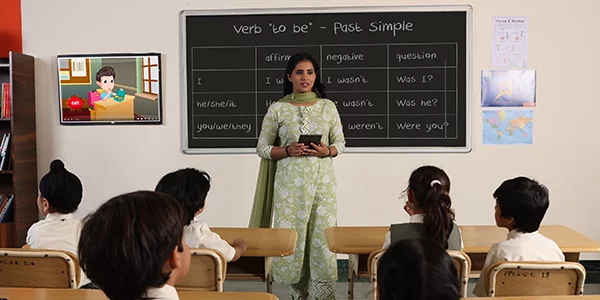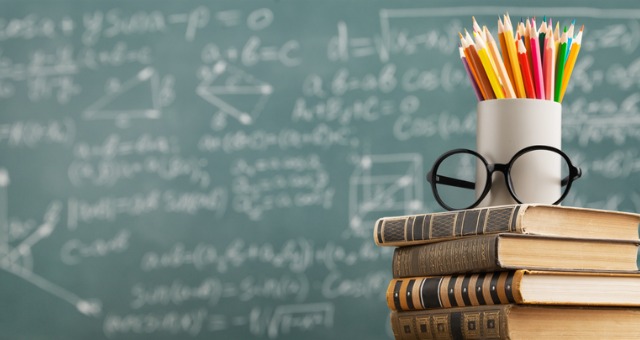Boost Your Child’s Confidence with Primary Science Tuition Singapore
Boost Your Child’s Confidence with Primary Science Tuition Singapore
Blog Article
A Comprehensive Guide to the Numerous Understanding Methods in Key Scientific Research Instruction
The expedition of diverse learning methods in main scientific research instruction presents an opportunity for instructors to boost student engagement and understanding considerably. By analyzing hands-on learning techniques, inquiry-based strategies, and collaborative strategies, we can recognize reliable practices that satisfy various learning designs. Furthermore, the assimilation of innovation and set apart instruction plays a critical function in fostering an inclusive environment. The question continues to be: how can these approaches be efficiently applied in the class to optimize their effect? The response exists in a more detailed analysis of each approach and its effects for teaching scientific research.

Hands-On Understanding Strategies
Hands-on knowing methods play an essential function in key scientific research direction, engaging pupils in active exploration and trial and error. These methods permit learners to connect directly with materials and sensations, fostering a deeper understanding of clinical principles. By utilizing manipulatives, designs, and real-life experiments, teachers create a setting where students can observe, hypothesize, and examine their concepts.
Such methods not only enhance understanding but also cultivate important reasoning and problem-solving skills. When trainees take part in tasks like developing basic devices, planting seeds, or performing chain reactions, they are urged to ask concerns and seek responses via their own observations. This experiential strategy aids to demystify intricate scientific concepts, making them extra available and relatable.
Furthermore, hands-on learning promotes cooperation among peers, as trainees often function in groups to carry out experiments or share searchings for. This teamwork not only improves their understanding experience however also creates important social abilities. Ultimately, integrating hands-on techniques in main scientific research direction fosters a lifelong love of learning and inquisitiveness about the all-natural globe, laying a strong foundation for future academic searches in science and past.
Inquiry-Based Learning
Inquiry-based knowing is an educational strategy that urges trainees to ask questions, check out phenomena, and construct their very own understanding of scientific principles. This approach moves the focus from traditional teacher-led guideline to a much more student-centered experience, where students take the effort in their instructional trip. By fostering inquisitiveness, inquiry-based learning advertises much deeper interaction with the material, allowing students to discover subjects in a purposeful context.
In technique, this method commonly includes hands-on experiments, monitorings, and essential reasoning activities that align very closely with the clinical method. Pupils are urged to create theories, design investigations, and examine information, which grows crucial abilities such as analytical and problem-solving thinking. The function of the teacher in this framework is to help with exploration, guiding trainees via the questions procedure while encouraging independent thought and cooperation.
Furthermore, inquiry-based understanding nurtures a feeling of ownership over the understanding process, motivating students to pursue understanding actively. This technique not only improves understanding of clinical principles yet likewise fosters a lifelong love for understanding, equipping students with the abilities required to navigate a significantly complicated globe.
Collaborative Learning Approaches
Joint understanding techniques equip students to take part in purposeful communications with peers, cultivating a shared obligation for their academic outcomes. In main science direction, these strategies encourage learners to interact to discover clinical ideas, fix troubles, and perform experiments (primary science tuition Singapore). By taking part in group activities, trainees can utilize varied perspectives, enabling richer understanding and retention of scientific knowledge
One secret facet of collective discovering is the emphasis on interaction skills. Pupils must express their thoughts, pay attention actively to others, and bargain ideas, every one of which are essential competencies in both real-world and scholastic contexts. This social communication not just boosts their understanding of clinical concepts but additionally advertises teamwork and dispute resolution skills.
When students see the value of their contributions within a team, they are extra likely to take possession of their knowing journey. In general, integrating joint discovering methods in main scientific research guideline cultivates a vibrant learning setting that prepares students for future academic and social difficulties.
Technology Assimilation in Science
The integration of technology in primary scientific research direction boosts finding out experiences by offering innovative tools and resources that sustain numerous training techniques, consisting of collaborative knowing - primary science tuition Singapore. The usage of digital platforms, simulations, and interactive applications permits pupils to engage deeply with clinical ideas, facilitating an extra hands-on strategy to understanding
Online laboratories, as an example, enable students to perform experiments safely and efficiently, advertising inquiry-based learning. These tools can replicate real-world scientific situations, permitting students to picture complex processes that would certainly be difficult to replicate in a typical classroom setting. Additionally, innovation promotes interaction and cooperation amongst students, as they can share findings and interact on jobs with online systems.
Furthermore, multimedia discussions and educational video clips can enhance lessons by accommodating diverse learning styles, making abstract ideas a lot more obtainable. Data evaluation devices also equip pupils to gather and analyze clinical information, enhancing essential thinking abilities. On the whole, the strategic incorporation of modern technology in key science guideline not only improves engagement yet additionally prepares trainees for a technologically sophisticated society, look at here outfitting them with necessary skills for future scientific ventures.
Differentiated Instruction Methods
Distinguished direction strategies are vital for attending to the diverse needs of learners in key scientific research education. These methods allow instructors to tailor their teaching techniques to accommodate varying capacities, rate of interests, and finding out styles within the classroom. By employing set apart guideline, educators can produce an inclusive setting that fosters involvement and boosts understanding of scientific concepts.
One efficient approach is to use adaptable grouping, which allows pupils to team up with peers at comparable skill degrees or with varying point of views. This method motivates peer knowing and promotes essential thinking. Additionally, using selections in projects can encourage pupils, allowing them to pick jobs that resonate with their rate of interests while still fulfilling curricular objectives.
In addition, integrating tiered tasks is an additional beneficial strategy. Deliberately jobs with differing degrees of complexity, educators can make certain that all trainees company website are properly tested, no matter their efficiency. Using formative assessments to evaluate understanding further enables teachers to change their training methods dynamically, making sure that each student gets the support they require.
Ultimately, executing distinguished guideline techniques in primary science education not only improves student understanding end results but also grows an interest for science, preparing trainees for future scholastic quests.

Final Thought
In recap, efficient main scientific research direction demands a complex method that incorporates hands-on understanding, inquiry-based techniques, and collective techniques. The combination of innovation and distinguished direction additionally caters to diverse understanding designs, fostering a setting favorable reference to expedition and critical reasoning. By implementing these approaches, instructors can improve pupil engagement and understanding, eventually supporting a long-lasting enthusiasm for scientific research and inquiry. Such extensive methods are important for developing educated and interested future scientists.
The expedition of varied understanding approaches in primary scientific research guideline provides a chance for teachers to improve pupil interaction and understanding significantly.Hands-on learning methods play a crucial function in primary scientific research guideline, involving students in energetic exploration and experimentation.Inquiry-based learning is an educational technique that motivates students to ask questions, explore sensations, and build their very own understanding of clinical principles.Joint learning approaches empower trainees to involve in meaningful communications with peers, cultivating a shared obligation for their educational end results. Overall, including collective knowing strategies in main science direction grows a vibrant learning environment that prepares trainees for future scholastic and social challenges.
Report this page